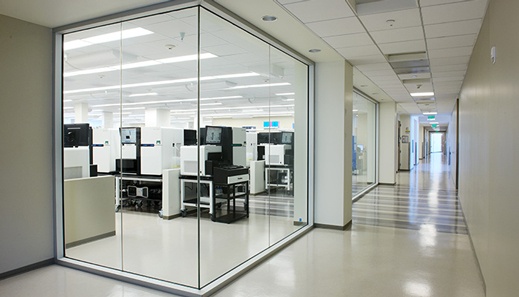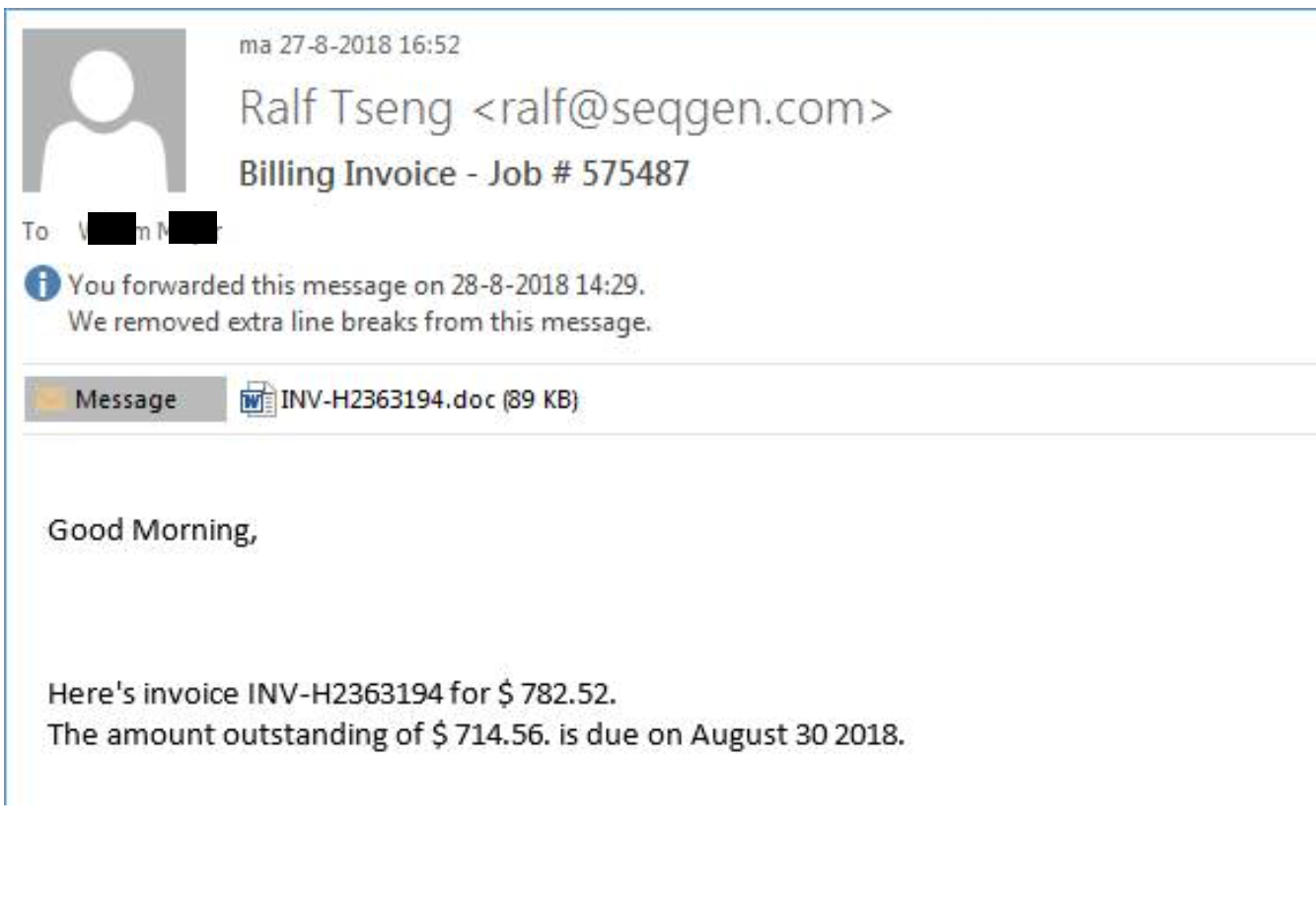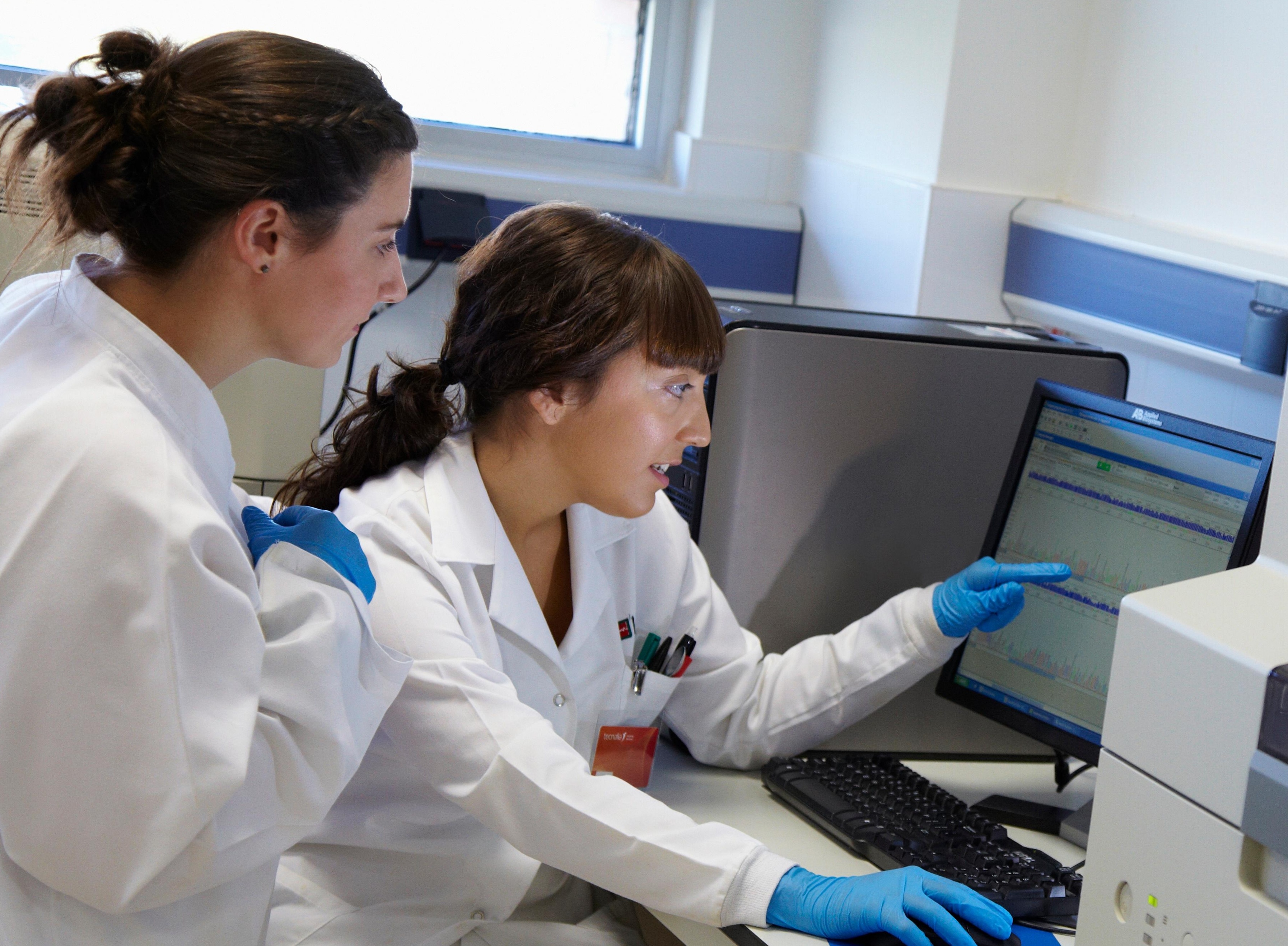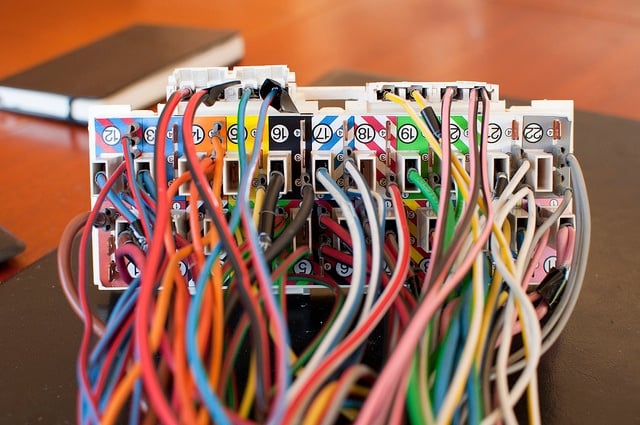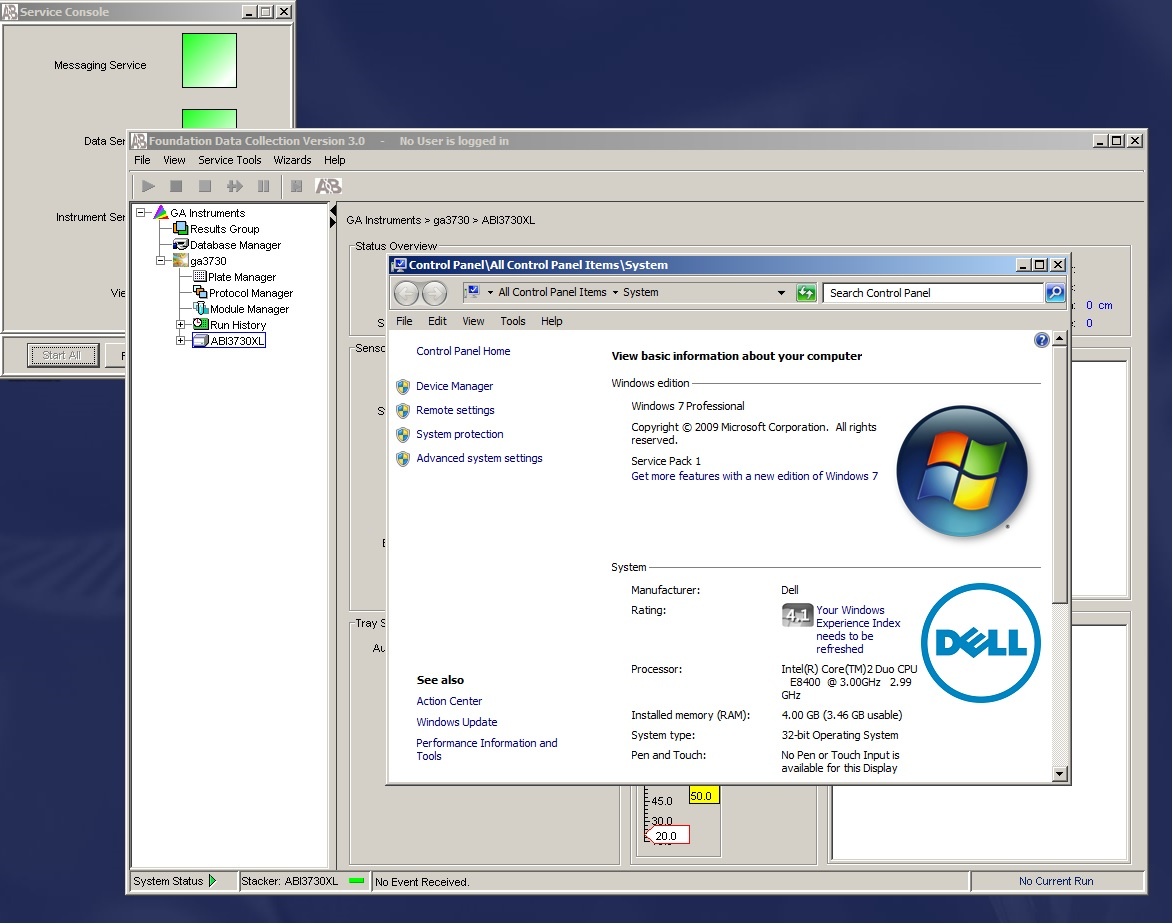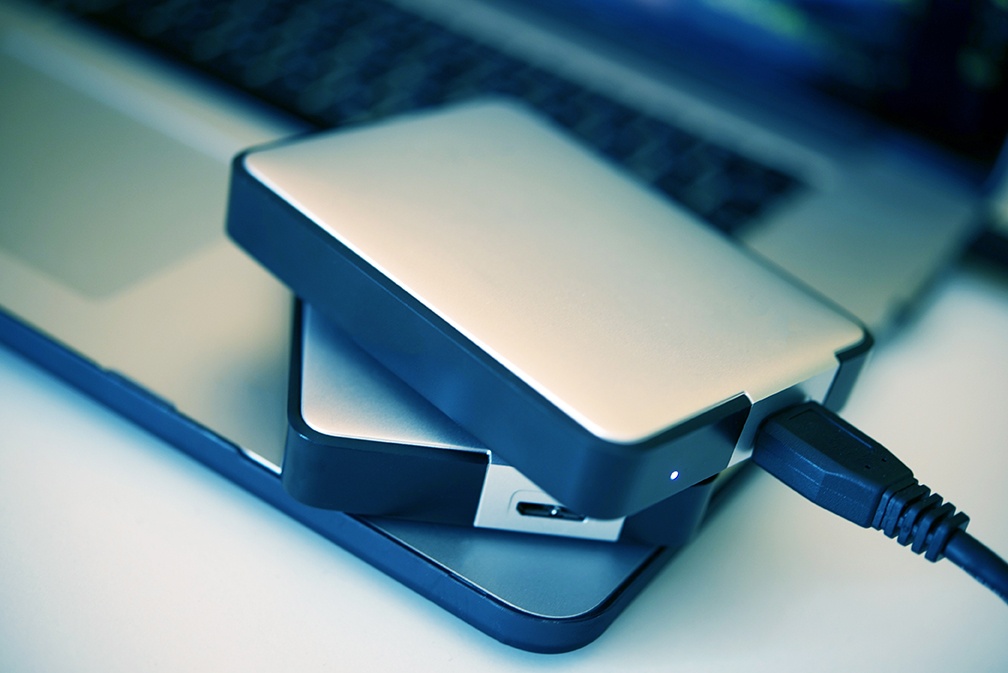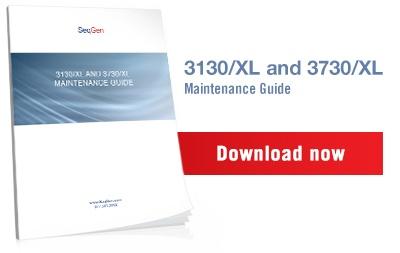We strongly recommend to have a professional handle any instrument move to avoid compromising its performance and most importantly to avoid any accidents. Mishandling this machine can be very costly. Please note that our engineers are highly qualified and trained to perform decommission, recommission and to prepare your machine for a short and long distance move.
Please let me interrupt your day to make you aware of a situation. We have just been made aware that several of our customers have received a suspicious email structured to appear as an invoice. First off, this is not our format for invoices. Secondly, all invoices are generated from Quickbooks. Third, all invoices will be generated from one email: quickbooks@notification.intuit.com NEVER from any individual. We hope these have been caught by your internal spam filters, if not then please do not open and delete. If you ever have any questions surrounding an emails received, please don't hesitate to contact SeqGen to verify the legitimacy of its content. Our direct business line is 877-377-3743.
If your lab uses an ABI 3130/xl Genetic Analyzer or a 7900HT qPCR, we have some bad news. Thermofisher has discontinued service for these machines. As such, you may have received a notice saying you’ll need to upgrade your technology if you’d like to continue maintenance. But here's some good news: SeqGen plans to offer service coverage on these machines for many years to come!
I'm taking a step back in time from our technology-driven culture. I have been, for the past two weeks, living like a pioneer. Ok, more like a part-time pioneer. My refrigerator decided to throw in the towel and call it quits three days before Easter. Before finally calling a technician for help, I tried the standard troubleshooting process, hoping it would provide resolution.
Spring is officially here, and that means more sunlight to enjoy outside. With that in mind, I made a comment to my loving husband. Our deck's wooden boards have started to show the effects of seasonal heat, rain, and snow through the years. To prevent further damage, I suggested that we replace the decayed boards now and consider switching to composite in the future. And with that, I was off to CrossFit. I was only gone for an hour, but upon my return, I was shocked to find my deck was no more! In only 60 minutes, my husband and father-in-law had removed the surface boards to discover there was deeper decay in the support beams. Sometimes, the real issue isn't visible on the surface. You have to tear away the top layer to find the underlying problem.
This year, I went a little overboard with my New Year’s resolutions. I'm all in, and by all in, I mean I have joined every gym and exercise class possible. In addition to CrossFit, I have started kickboxing, Krav Maga, indoor cycling, a running club, and I might even try yoga. After all, what better time to strive for change and self-improvement than the new year? Sure, we can commit to new habits any time of the year, but undeniably, there is more motivation once the calendar changes to January 1. Along with your goals for personal growth, what about making a resolution related to business?
I have a confession: I put up my Christmas tree in mid-November. Eager to fill my home with holiday cheer, I dragged my fake, pre-lit tree out of the attic, plugged it in, and expected pure bliss.
SeqGen is incredibly dedicated to its customers and their machines. Your concerns are our concerns. We have recieved many emails and phone calls from our customers asking whether they have to upgrade their sequencing and fragment analysis software to work on the Windows 7 operating system. Like many major updates to these machines, this maintenance can be rather pricey. Before you write that check, you’ll want to make sure you actually need the update.
Maybe it’s my obsessive behavior or maybe I’m paranoid, but as the seasons change, I feel the need to do thorough preparation on the home front. I pull out my trusty checklist of required maintenance and cleaning, then get to work.
As the day wanes on, I find myself wondering, “What’s the point? Why do I exhaust myself fixing things that aren’t broken yet?” But then I remember Murphy’s Law – whatever can go wrong, will go wrong. If you simply anticipate and prepare for those inevitable little disasters, you can significantly reduce the amount of chaos you’ll have to deal with later.
Not too long ago, I decided to switch phones. It should have been a simple process. Buy the new device, take it home, transfer my data, and carry on. But this time, something went wrong. Eager to start using my shiny new toy, I completely forgot to back up my data on the cloud. And as a result, I lost everything: my notes, my contacts, and several years’ worth of important data. When my cell phone rings now, I’m always left wondering – is this a friend or a pesky solicitor?

